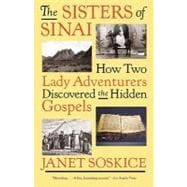
What is included with this book?
| Map: Europe and the Near East in 1885 | p. ix |
| Prologue | p. xi |
| Cambridge, 13 April 1893 | p. 3 |
| The Birth and Upbringing of the Lady Bible-Hunters | p. 7 |
| The Journey to the Nile | p. 22 |
| The Boat | p. 26 |
| The Perfect Dragoman | p. 30 |
| The Search for the Perfect Mate | p. 51 |
| Greece | p. 58 |
| The Estate of Marriage | p. 64 |
| The Cambridge Antiquarian | p. 78 |
| Heresy and Mortality | p. 91 |
| Sinai and von Tischendorf | p. 99 |
| The Perils of Bible-Hunting | p. 103 |
| The Story von Tischendorf Did Not Tell | p. 109 |
| Setting Out for Sinai | p. 114 |
| The Treasure in the Dark Closet | p. 122 |
| The Cambridge Party | p. 134 |
| The Disjoint Expedition | p. 143 |
| The Final Falling-Out | p. 167 |
| The Devilish Press and the Highland Regiment | p. 174 |
| The Cambridge Cold Shoulder | p. 185 |
| A Lightning Course in Text Scholarship | p. 191 |
| In the Company of Orientalists | p. 200 |
| Burying the Hatchet | p. 204 |
| Keepers of Manuscripts | p. 214 |
| Solomon Schechter and the Cairo Genizah | p. 220 |
| In Cairo with Schechter | p. 230 |
| Castlebrae | p. 238 |
| The College's Opening | p. 248 |
| To the Monasteries of the Nitrian Desert | p. 251 |
| The Active Life | p. 255 |
| The Darkening to War | p. 264 |
| Palimpsest | p. 271 |
| Coda | p. 278 |
| Acknowledgements | p. 281 |
| A Note on Sources | p. 283 |
| Select Bibliography | p. 301 |
| Index | p. 305 |
| Table of Contents provided by Ingram. All Rights Reserved. |
The New copy of this book will include any supplemental materials advertised. Please check the title of the book to determine if it should include any access cards, study guides, lab manuals, CDs, etc.
The Used, Rental and eBook copies of this book are not guaranteed to include any supplemental materials. Typically, only the book itself is included. This is true even if the title states it includes any access cards, study guides, lab manuals, CDs, etc.